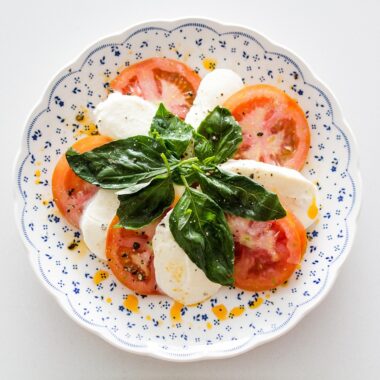Germany, often hailed as one of the most esteemed wine-producing regions in the world, is celebrated for its diverse and high-quality offerings. While many associate the country primarily with Riesling, German vineyards also produce a range of reds, sparkling wines, and other whites that rival the best in the world. In this article, we explore Germany’s top wines, regions, and producers, offering a comprehensive guide for both novices and aficionados.
A Brief History of German Wine
German viticulture dates back to Roman times, with a history spanning nearly 2,000 years.
Early winemakers capitalized on the region’s natural rivers and sloping vineyards, ideal for grape cultivation. Over time, German winemaking became synonymous with precision and quality, a reputation that endures to this day.
While the 20th century saw a decline in German wine’s prestige due to the rise of low-quality exports, the modern era has seen a revival. Today, German wine is celebrated for its crisp whites, elegant reds, and sparkling sekt wines, all crafted with meticulous care.
Top German Wine Varieties
Riesling
The undisputed king of German wine, Riesling, accounts for about 23% of the country’s vineyards. Known for its incredible versatility, Riesling can range from bone-dry (trocken) to lusciously sweet (trockenbeerenauslese). Its high acidity and aromatic profile make it a favorite among sommeliers.
Key Regions for Riesling:
Mosel: Produces delicate, mineral-rich Rieslings with a characteristic freshness.
Rheingau: Known for more full-bodied, elegant Rieslings.
Pfalz: Offers fruit-forward and approachable Rieslings.
Top Producers:
Joh. Jos. Prüm (Mosel)
Robert Weil (Rheingau)
Dr. Bürklin-Wolf (Pfalz)
Spätburgunder (Pinot Noir)
Germany is the third-largest producer of Pinot Noir, known locally as Spätburgunder. These wines are light to medium-bodied with flavors of red cherry, raspberry, and earthy undertones.
German Spätburgunders often exhibit an elegance comparable to Burgundy.
Key Regions for Spätburgunder:
Baden: Home to some of Germany’s finest Pinot Noirs.
Ahr: Known for its cool climate, producing elegant, fruit-driven Spätburgunders.
Pfalz: Offers slightly richer, more robust Pinot Noirs.
Top Producers:
Friedrich Becker (Pfalz)
Meyer-Näkel (Ahr)
Bernhard Huber (Baden)
Silvaner
Though less internationally recognized, Silvaner thrives in Franconia and parts of Rheinhessen. Known for its subtle, herbaceous character and excellent pairing potential with food, Silvaner is a hidden gem among German wines.
Key Regions for Silvaner:
Franconia (Franken): The best Silvaners come from this region, often bottled in the distinctive Bocksbeutel.
Top Producers:
Juliusspital Würzburg
Hans Wirsching
Sekt
Germany’s answer to sparkling wine, Sekt, is a festive, refreshing option. While much of it is mass-produced, premium Sekt crafted from traditional methods offers exceptional quality.
Key Regions for Sekt:
Rheingau: Produces high-quality Riesling Sekt.
Mosel: Known for its aromatic and vibrant sparkling wines.
Top Producers:
Raumland
Schloss Vaux
Key Wine Regions in Germany
Mosel
Mosel’s steep, slate-rich vineyards produce some of the most iconic Rieslings in the world.
The region’s wines are known for their low alcohol content, high acidity, and floral aromas.
Famous sites like Wehlener Sonnenuhr and Bernkasteler Doctor exemplify Mosel’s excellence.
Rheingau
Rheingau is synonymous with quality. This region’s south-facing slopes along the Rhine River produce Rieslings and Spätburgunders with remarkable depth and complexity. The Rheingau also boasts a strong tradition of trocken (dry) wines.
Pfalz
The sun-drenched vineyards of Pfalz make it Germany’s second-largest wine-producing region. Known for both Riesling and Pinot varietals, Pfalz wines are accessible, fruit-driven, and versatile.
Baden
Germany’s warmest wine region, Baden, excels at producing Spätburgunder. It is also home to excellent Grauburgunder (Pinot Gris) and Weissburgunder (Pinot Blanc) wines.
Franconia
Franconia, located in northern Bavaria, is famous for Silvaner and crisp white wines. Its distinctive Bocksbeutel bottles make Franconian wines easily recognizable.
Top German Wines to Try
Joh. Jos. Prüm Wehlener Sonnenuhr Riesling Spätlese
A quintessential Mosel Riesling, this wine is known for its honeyed sweetness balanced by vibrant acidity. Aromas of stone fruit, lime, and slate make it a memorable experience.
Bernhard Huber Schlossberg Spätburgunder GG
Hailing from Baden, this Pinot Noir offers a Burgundian elegance with notes of cherry, spice, and earthy minerality. A must-try for red wine lovers.
Hans Wirsching Iphöfer Julius-Echter-Berg Silvaner GG
This Franconian gem exemplifies the Silvaner variety, offering herbaceous notes with a creamy texture and a clean, mineral finish.
Raumland Prestige Riesling Brut Nature
A premium Sekt crafted in the traditional method, this sparkling wine delivers a crisp, refreshing palate with notes of citrus and brioche.
Dr. Bürklin-Wolf Wachenheimer Riesling Trocken
A dry Riesling from Pfalz, this wine showcases a balance of ripe fruit flavors and a distinct minerality.
Food Pairing with German Wines
German wines are among the most food-friendly in the world. Their high acidity and diverse flavor profiles make them excellent companions to various dishes.
Riesling: Pairs wonderfully with spicy Asian dishes, roasted poultry, and creamy cheeses.
Spätburgunder: Complements grilled salmon, roasted duck, and mushroom-based dishes.
Silvaner: A great match for asparagus, shellfish, and vegetable dishes.
Sekt: Perfect for celebrations and pairs well with oysters, sushi, and light desserts.
Tips for Buying and Storing German Wines
Understand German Wine Labels: Terms like trocken (dry), halbtrocken (off-dry), and süß (sweet) help identify the wine’s style.
Look for VDP Classification: The Verband Deutscher Prädikatsweingüter (VDP) classification highlights top-tier wines and vineyards.
Store Properly: Keep bottles in a cool, dark place with stable temperatures. Rieslings can age for decades, developing complex flavors over time.
Experiment: While Riesling is the star, don’t overlook Germany’s other varieties, such as Silvaner or Spätburgunder.
Conclusion
German wine offers a treasure trove of options for wine enthusiasts. From the mineral-driven Rieslings of Mosel to the elegant Spätburgunders of Baden, there’s something for every palate.
Exploring Germany’s diverse wine regions and styles is not just a journey through bottles but a celebration of centuries-old traditions and innovation. Whether you’re a seasoned oenophile or a curious beginner, the world of German wine promises to delight and surprise.
Cheers, or as the Germans say, Prost!


















